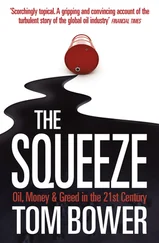If we (including historians) are all implicated in the stories we tell, then I, too, have an obligation to explain my own narrative. What am I up to in writing about more than two centuries of stories about a crime of passion which, though terrible for those immediately involved – James Hackman, Martha Ray, the Earl of Sandwich and their children – hardly seems the stuff of ‘history’? The answer to this lies, I believe, in my response to the sometimes rather brutal debates that have taken place over the last twenty years or so between two very different notions of history: one that emphasizes that history is the recovery of what actually happened in the past; the other that history is made in the present, the plotted and imaginative construct of a modern historical narrator. I leave these questions to my epilogue in which I try – doubtless disingenuously – to put my narrative in its turn-of-the-millennium context.
JOHN MONTAGU, 4th Earl of Sandwich, was a tall gangling man with ‘strong legs and arms’ and a ruddy appearance that led the novelist Frances Burney, when she first met him in 1775, to compare him with a rough-hewn Jack Tar: ‘he is a tall, stout man & looks weather-proof as any sailor in the navy 1 ’. Portraits by Gainsborough and Zoffany reveal a large, hooked nose, thin, sensual lips and a long torso that makes his head seem unaccountably small. They also fail to conceal the clumsiness that led Sandwich’s French dancing master to ask that ‘your Lordship would never tell any one of whom you learned to dance 2 ’. ‘Awkward’ and ‘shambling’ were how his friends described him, one remarking to another as they spotted him from a distance ‘I am sure it is Lord Sandwich; for, if you observe, he is walking down both sides of the street at once 3 ’.
Sandwich had energy that more than compensated for his clumsiness. Despite his lack of polish, he had a reputation as a ladies’ man. One anonymous female correspondent confided in him, ‘you have it in your power to gain the affections of almost any woman that you study to please’. Women found him charming, and he pursued them relentlessly from his youth into middle age. In his sixties he admitted, ‘I have never 4 pretended to be free from indiscretion, and those who know me have been … long accustomed to forgive my weaknesses, when they do not interfere with my conduct as a public man.’
For a peer, Sandwich was not wealthy, and from 1739, when he took his seat in the House of Lords at the age of twenty-one, he sought political office to increase his income. During a long career in government he served as Secretary of State, Postmaster General and as a diplomat, but the post that he saw as his own and for which he is best remembered was First Lord of the Admiralty, an office he held between 1747 and 1751 and again after his appointment by Lord North in 1770.
Waking on the morning of 7 April 1779 in the ample apartments in the Admiralty building that were one of the perquisites of his post, Sandwich faced a busy day of government business. The Admiralty gates in the Robert Adam screen that separated the offices from the street opened at 9 a.m., when four of the office clerks arrived to receive their instructions, began transcribing documents to captains and admirals, suppliers and politicians, and made neat copperplate copies in official letter books and ledgers. The eleven-hour day was one of the longest in any government office: all the clerks were in attendance between eleven in the morning and four in the afternoon, but a part of the staff kept the Admiralty open between nine and eleven, and between six and ten in the evening.
Though Sandwich had many political enemies, he was generally acknowledged to be a conscientious and industrious official. He was, as one contemporary put it, ‘Universally admitted to possess eminent talents, great application to the duties of his office, and thorough acquaintance with public business … In all his official functions he displayed perspicuity as well as dispatch 5 .’ Normally his working day began even before the Admiralty opened: ‘he rose at an early hour, and generally wrote all his letters before breakfast 6 ’, and he frequently had no respite before taking a late evening meal. On one occasion he complained, ‘I am fatigued to death having been with my pen in my hand [for]…thirteen hours 7 .’ The snack that bears Sandwich’s name, and that was first made by slipping a slice of naval salt beef between two pieces of bread, was made to allow not, as legend has it, for longer hours at the gaming table, but more time at the office.
Admiralty business, of course, was not always so onerous, and the First Lord left much of the detailed work to his reliable and experienced Secretary, Philip Stephens, an official with more than twenty-five years’ service for the Admiralty Board. But when the nation was at war and when parliament was in session, as it was in the spring of 1779, the office required constant attention. The nation was embroiled with its American subjects; France and Spain had just joined the rebellious colonists. Because of the weight of business the Admiralty had hired four additional clerks in the last year. The most recent appointment, Mr Hollinworth, had begun work the previous morning.
Yet there were additional reasons why the Admiralty was so frenetic on this warm spring day. For the Admiralty Board and especially Lord Sandwich were at the centre of a huge political row about the conduct of the American war. The parliamentary opposition, led by Charles James Fox in the Commons and the Duke of Richmond in the Lords, was determined to lay the blame for Britain’s military failures at the door of the Admiralty, and had launched a determined attempt to drive Sandwich from office, if not to overthrow the government itself.
The squall had blown up more than a year earlier, when the war had been going particularly badly. Forced to maintain supply lines to Boston, New York and the Chesapeake, the navy was overstretched and undermanned. Encouraged by Britain’s plight, and eager to revenge their previous defeats, France had pledged support to the Americans in the summer of 1778. One of Sandwich’s spies, John Walker, had been sending him alarming reports for several years of a major French naval build-up. Despite Sandwich’s warnings to his colleagues, too little was done too late. Better equipped, the French battle fleet threatened to outnumber the British and to make possible a French landing on the south coast of England.
Sandwich and his colleagues had been bitterly attacked for their conduct of the war and their lack of preparedness for its escalation. Their hopes (like those of most Britons) had been pinned on an early and decisive naval victory against France that would have seen off the threat to Britain’s supply lines and trade, and dispelled the threat of invasion. But when the two fleets met off Ushant on 27 July 1778, the French repelled the English attack and inflicted great damage before retreating to Brest. The threat of French superiority remained, and was soon compounded by the prospect of Spain’s entry into the war on the colonists’ side. On 15 October Sandwich wrote to the prime minister, Lord North, ‘The situation of our affairs is at this time so critical and alarming that my mind will not rest, without I collect my thoughts and put on paper the ideas I have of the danger we are in, and what exertions we can use to guard against the storm that is hanging over us 8 .’
On the same day an article appeared in the opposition newspaper, the General Advertiser and Morning Post , blaming Rear-Admiral Sir Hugh Palliser, a member of the Admiralty Board and a close ally of Sandwich’s, for failing to follow an order of the fleet’s leader, Admiral August Keppel, a political ally of the Foxite opposition, to engage the French more closely. The article provoked a huge row, which turned officers against one another and divided the navy into bitter factions (contemporaries talked of the Montagus and Capulets). Keppel and Palliser, both MPs, squabbled on the floor of the House of Commons; both were eventually court martialled. Throughout the winter and early spring of 1779 the Foxite opposition kept up the pressure on the government, proposing motion after motion attacking its policy in general and Sandwich in particular. In February it looked as if, for Sandwich at least, the game was up. King George III and Lord North decided to remove him from the Admiralty as a way of appeasing government critics. Only the failure of negotiations for a replacement kept him in office. On 11 February a court martial acquitted Keppel and dismissed Palliser’s charges against the admiral as ‘malicious and unfounded’. That evening a crowd of opposition supporters smashed the windows of Sandwich’s lodgings, frightening his mistress, Martha Ray, who was staying there. The crowd tore off the Admiralty gates, looted Palliser’s house in Pall Mall and attacked the homes of other Admiralty officials.
Читать дальше












